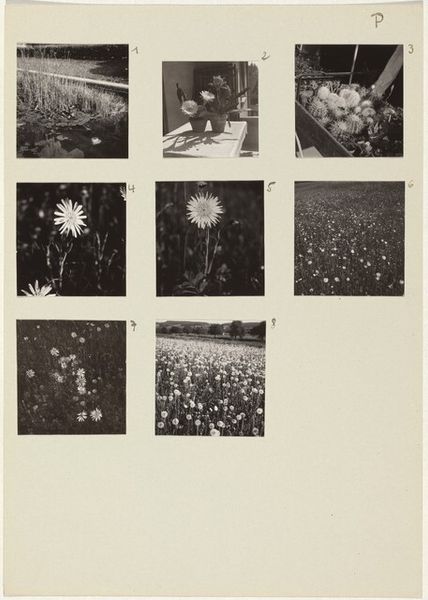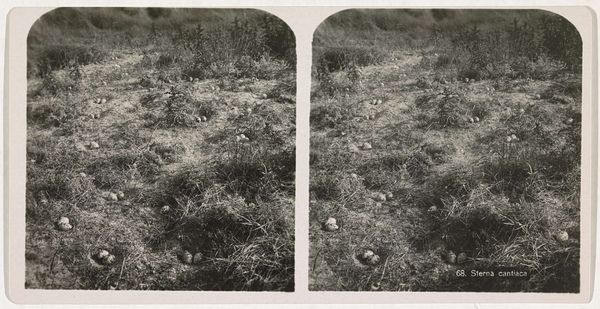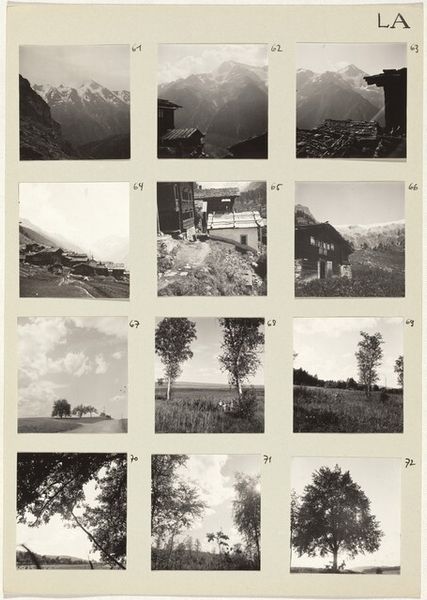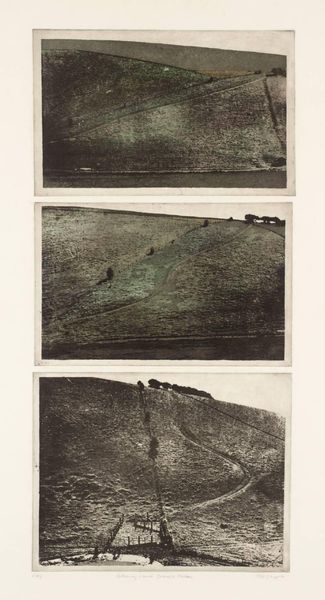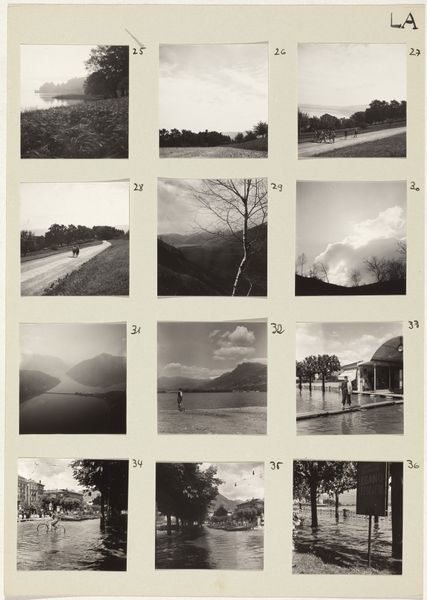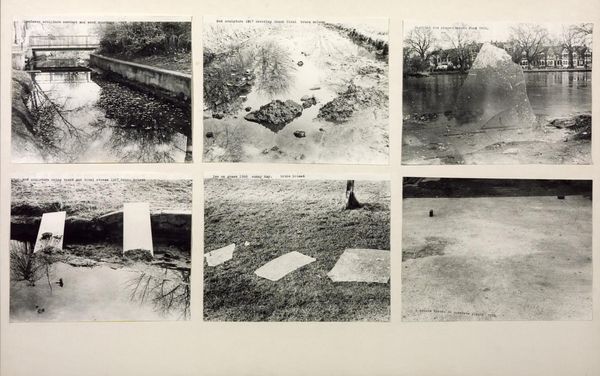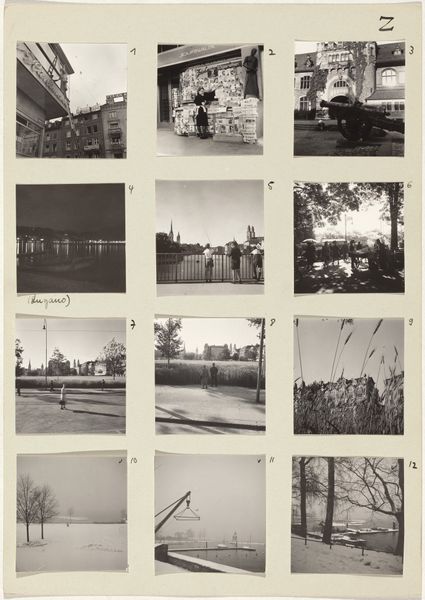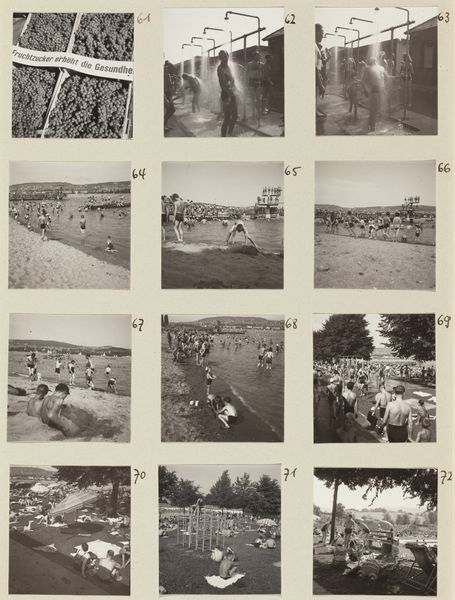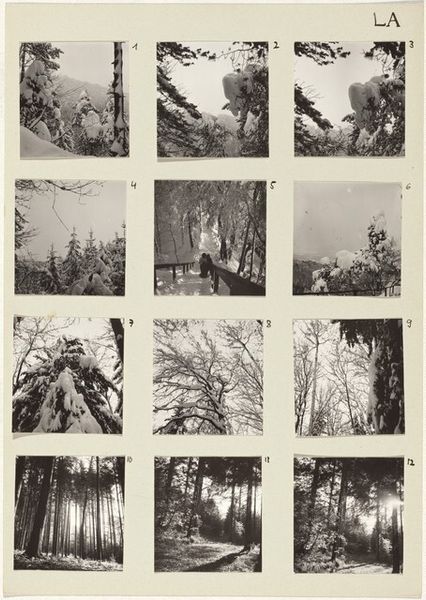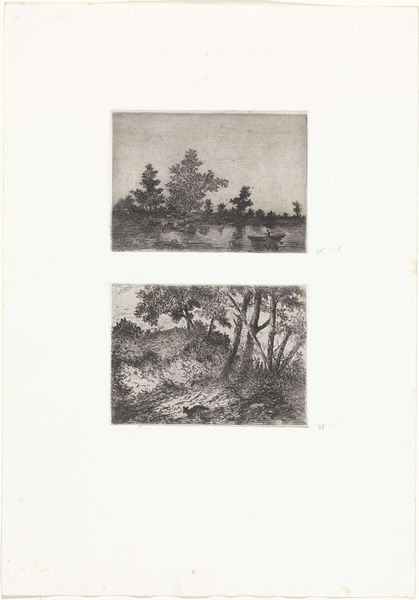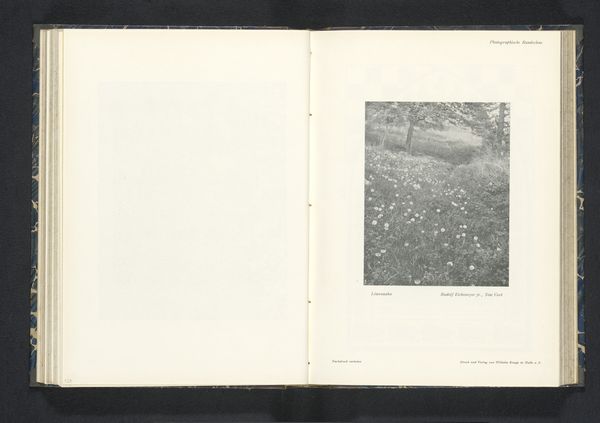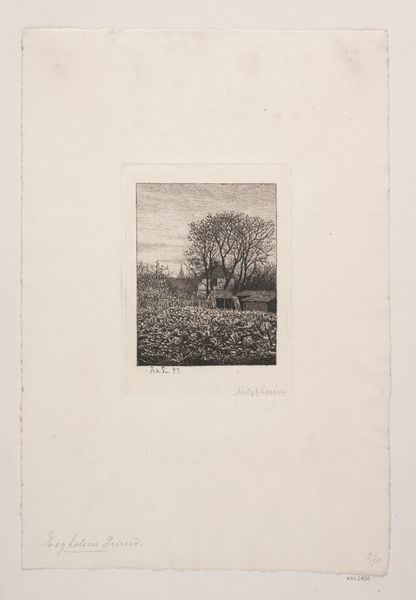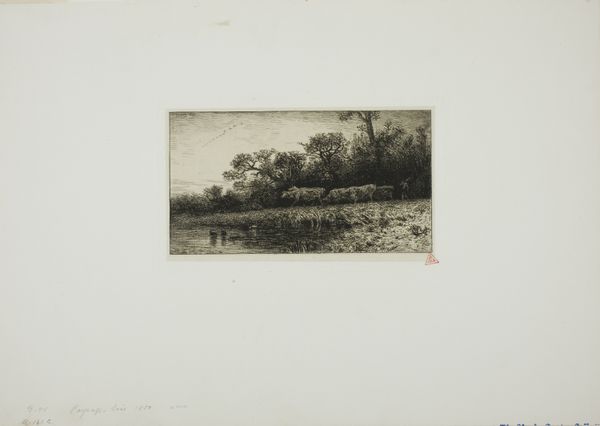
photography, gelatin-silver-print
#
landscape
#
photography
#
geometric
#
gelatin-silver-print
#
realism
Dimensions: sheet: 29.6 x 21 cm (11 5/8 x 8 1/4 in.)
Copyright: National Gallery of Art: CC0 1.0
Curator: This is a piece titled "Die Landschaft (Landscape) 13-24" created between 1942 and 1946 by Robert Frank. It’s a gelatin-silver print, organized in a grid-like manner with twelve distinct photographic studies. Editor: My first impression is one of stark contrast—a kind of bleak beauty. The composition with its grid reminds me of typology, a record of variations, and something about the materiality of silver-gelatin emphasizes the gray scale, offering muted yet luminous textures. Curator: It's worth noting that Frank produced this work during and shortly after World War II, which definitely contextualizes the feeling of starkness you described. One could interpret the repeated landscape views as reflecting themes of loss, resilience, or even a quiet resistance against the turmoil of the time. It speaks of the relationship between identity, land, and place amidst sociopolitical upheaval. Editor: Right, thinking about the material conditions then, it is not so difficult to draw lines between his access to materials, like silver and gelatin for these prints, his choice to photograph nature and his access to a certain landscape – these would shape not just his practice, but the images themselves. The consistency within the series highlights how Frank, even then, was beginning to develop his unique photographic voice by creating and compiling similar gelatin prints of the same or similar motifs. Curator: Exactly. Looking through an intersectional lens, one could read it as Frank trying to define the Swiss identity against the backdrop of war and geopolitical change in Europe, given Frank’s status as a Swiss-Jewish man, one could analyze these images from a political and even personal level. The way the landscape is viewed and composed, each unique, contributes to broader issues of Swiss cultural nationalism, even though the landscapes depicted could almost anywhere. Editor: The materiality really plays into that sense of understated national identity you highlighted. These landscapes are documented with very little sentimentality – a study of the composition with almost utilitarian starkness, a deliberate approach to materiality in that the image, as material record of an action, serves as more evidence of presence, marking the intersection between Frank as a man behind the camera, but also Frank as subject and participant, capturing a cultural object, a gelatin-print. Curator: Indeed. For me, viewing Frank’s early work offers insights on not just the landscapes but broader historical and sociopolitical contexts surrounding the images – the landscape acts as witness to change, carrying layered identities and power structures within each silver particle. Editor: Yes, understanding his materials and working method allows a different understanding about his presence at the time, and a materialist approach can illuminate Frank's later work, because in them we see him actively experimenting and playing with them to explore personal or even national narratives.
Comments
No comments
Be the first to comment and join the conversation on the ultimate creative platform.
